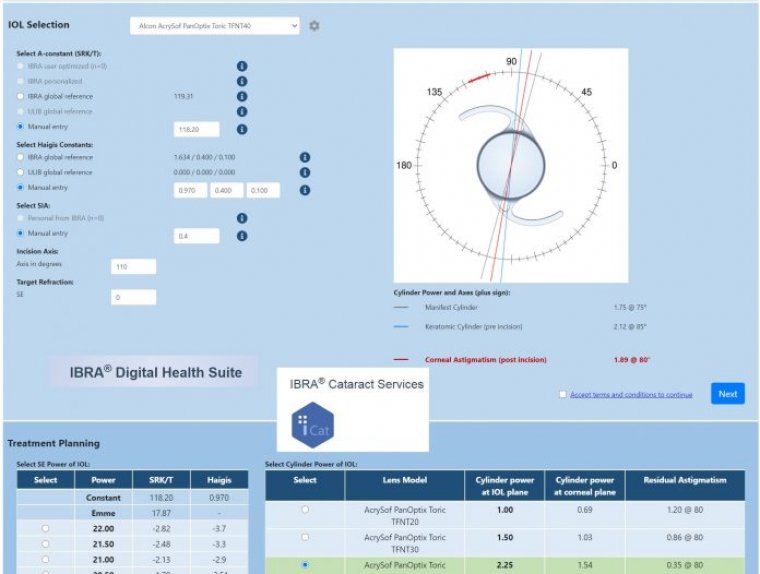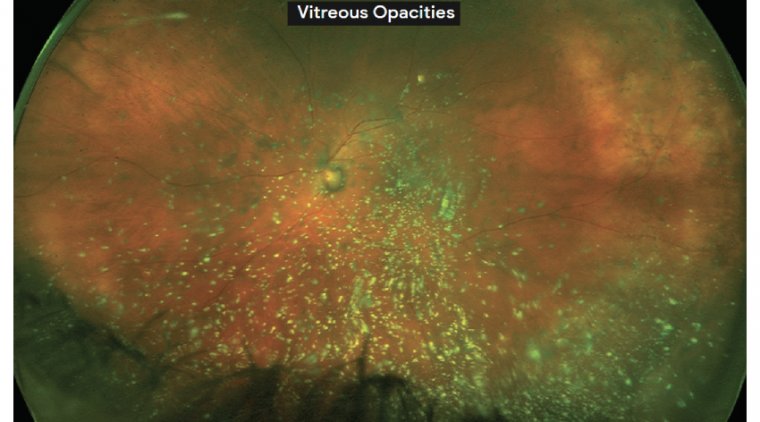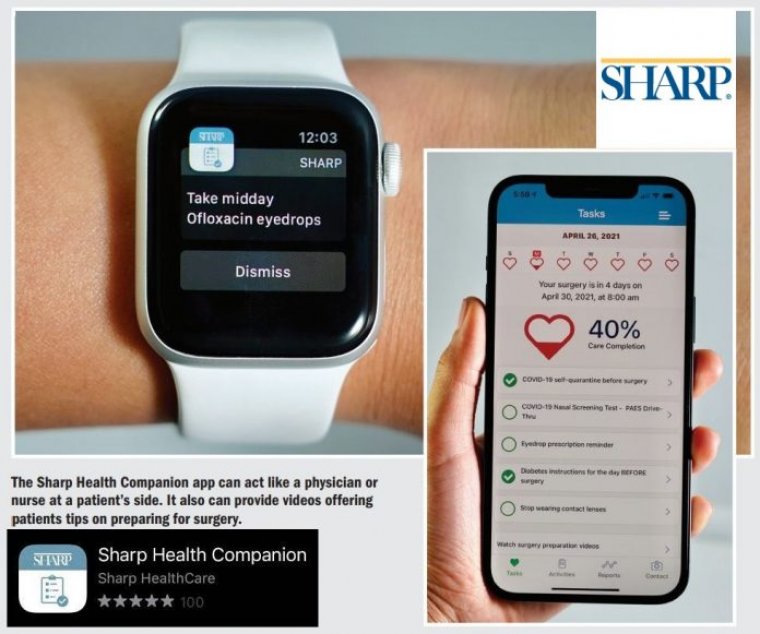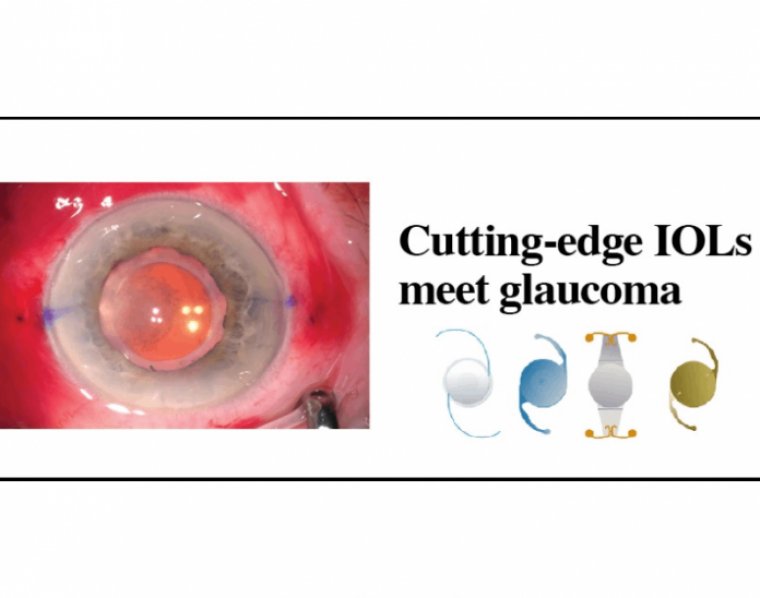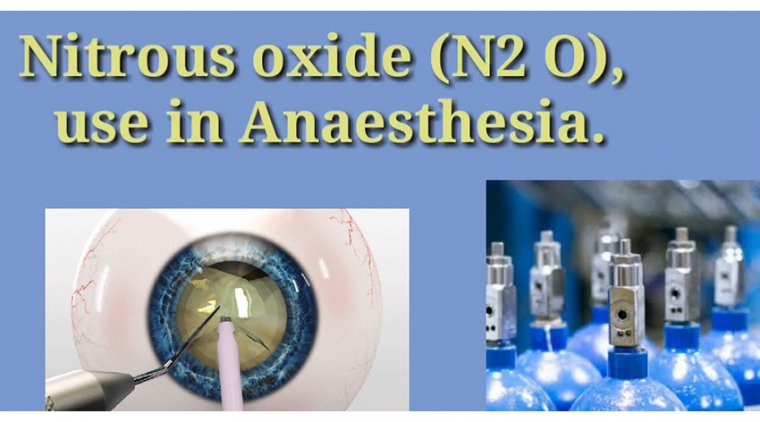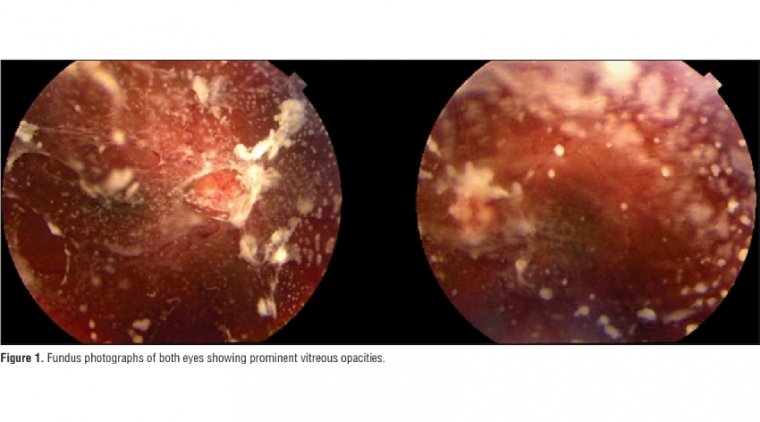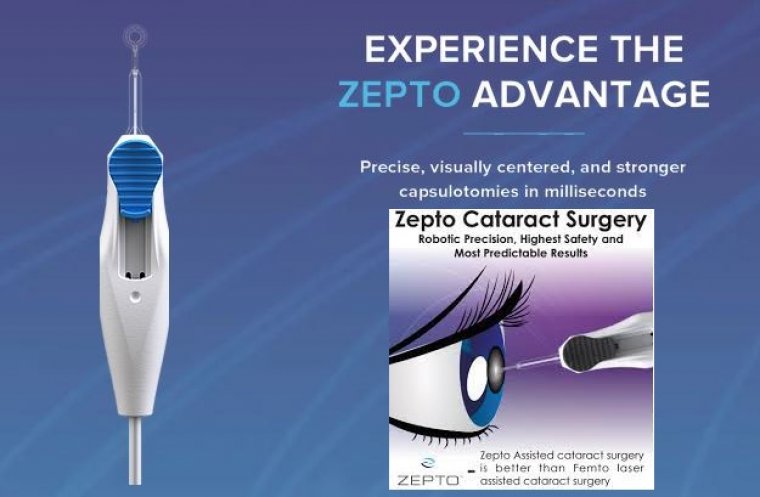
Cataract Surgery & ZEPTO
Despite the appeal of an automated method of creating a perfectly circular anterior capsulotomy, global adoption of femtosecond laser capsulotomy (FSLC) has been limited by its high acquisition and per case cost.
In addition, the femtosecond laser’s large size and the need for eye docking create surgical efficiency and workflow challenges.
The Zepto precision pulse capsulotomy (PPC) technology creates a circular anterior capsulotomy of a precise diameter using a disposable handpiece and tip that are used in the normal surgical sequence.
Zepto Cataract surgery is the latest advancement in automated cataract surgery. “Zepto Capsulotomy Device” was developed around a decade ago.
The device is disposable, handheld, and attached to a state of the art console. It is made of Nitinol alloy, which can be inserted through an almost 2mm incision of the cornea.
It uses a built-in vacuum and fast, low-energy pulses of direct current to perform a perfectly centered and circular capsulotomy, each time.
Zepto PPC holds promise for complicated eyes such as those with intumescent or brunescent lenses, zonulopathy, or small pupils.
Consistency of protocol contributes to success inside the operating room (OR) and goes a long way toward dictating patient outcomes outside the OR.
The level of precision during each surgical step significantly impacts the overall performance of any procedure, especially when it comes to cataract surgery.
Because cataract patients today have a longer life expectancy and more active lifestyles, there has been an associated increase in demand for outstanding visual outcomes.
Advancements in technology, from both a general perspective and a health-care perspective, have contributed to heightened expectations as well.
One of the more delicate tasks during cataract surgery, creating an anterior capsulotomy, is said to be key in determining success of subsequent surgical steps. A well-formed capsulotomy will impact hydrodissection, cortical aspiration and implantation of the IOL, according to research by Dr. Vance Thompson in 2018.
By automating capsulotomies, the ZEPTO Precision Cataract Surgery platform by Centricity Vision Inc. is poised to enhance OR safety and efficiency, as well as patient outcomes.
CHANGING CATARACT SURGERY STYLE
Designed to automatically create a strong, symmetrical anterior capsulotomy aligned on the visual axis, the ZEPTO will change the way surgeries are conducted, Centricity says.
Traditionally, surgeons have utilized two methods of creating the opening in the anterior capsule: the manual continuous curvilinear capsulorhexis (CCC) or a femtosecond laserassisted modality.
Although CCC is easily integrated into clinical workflow, safety concerns, such as anterior-capsule radial tears, rhexis breach, dysphotopsia and compromised retinal images in a decentered capsulotomy, as shown by Chang et al and Waltz et al in 2017, bring inherent limitations to the technique.
No primary safety issues are associated with the femtosecond laser, but high costs and efficiency concerns, including the need to have the patient located in another room due to the size of the device, have resulted in disruption of workflow and reduced efficiency, Chang found.
As such, capsulotomies are produced more precisely and the automation aspect of creating each capsulotomy and being able to align that capsulotomy on the visual axis helps to promote proper lens positioning at the completion of each surgery.
The 360-degree capsulotomies fully align with the patient’s visual axis. Having the ability to properly place and routinely center the IOL on the axis and to create an evenly placed 360-degree overlap with the IOL can help decrease postoperative adverse events.
“The beauty of this device is the creation of consistent capsulotomies to create an excellent overlap of the IOL with excellent strength, as well as safe, effective lens position and precision of the refractive result,” says Ike Ahmed, MD, a surgeon at Prism Eye Institute in Ontario, assistant professor at the University of Toronto and a clinical assistant professor at the University of Utah in Salt Lake City.
DESIGN AND FUNCTIONALITY DETAILS
The ZEPTO unit’s capsulotomy ring is made of a shape memory alloy that can easily be deformed. The suction cup at the end of the handpiece is flexible and creates a collapsible silicon sleeve that allows surgeons to place the device through a 2.2-mm incision or larger.
The device slides through the incision using a pair of forceps, and the handpiece tip is recircularized and centered along the first Purkinje image.
A modified suction cup affixed to the handpiece allows for improved proximal suction for consistent, circular, centered capsulotomies and brings the ring at the device’s tip into apposition against the lens capsule.
A power console designed to manage the vacuum and energy delivery connects to a single-use fluid isolator and the handpiece. Once positioned, 12 micropulses of energy are applied in 4 milliseconds and a 5.2-mm median diameter capsulotomy is formed.
Viscoelastic is pushed out of the suction cup with a small amount of balanced salt solution, floating the ZEPTO tip off of the capsule. The soft tip collapses as it exits the incision.
The uniform energy delivery and the console’s user interface, which includes voice command prompts, are among the aspects of the device intended to deliver more reliable outcomes.
When the system is powered on, automated self-tests confirm proper operation of the vacuum pump. As an advanced layer of security, the console also has a “watchdog” capability that allows its circuitry to monitor the software and shut the system down safely.
Similarly, the console measures the potential for handpiece resistance at the start of connection and faults if resistance is out of range. The unit can also self-detect if the ring breaks and adjusts its output voltage to deliver consistent energy, regardless of resistance.
PATIENT AND COVERAGE SPECIFICS
Although the technology is suitable for anyone undergoing cataract surgery, the company says ZEPTO is especially effective for patients receiving advanced technology lenses, due to the demand for precision.
Procedures done with ZEPTO result in less risk of an imperfect lens placement; additionally, alignment of and anchoring the lens in the capsular bag is a more perfected process as well.
The only current contraindications, per the instructions for use, are with the presence of microphthalmos, buphthalmos, posterior polar cataract as well as in pediatric patients.
Currently, no Medicare national or local coverage determinations address the procedure while using ZEPTO.
However, Centricity reports that physicians have been known to include ZEPTO in their advanced technology IOL packages or refractive astigmatism-correcting packages.
The use of an advance beneficiary notice of non-coverage prior to furnishing treatment is also an option practice can utilize.

